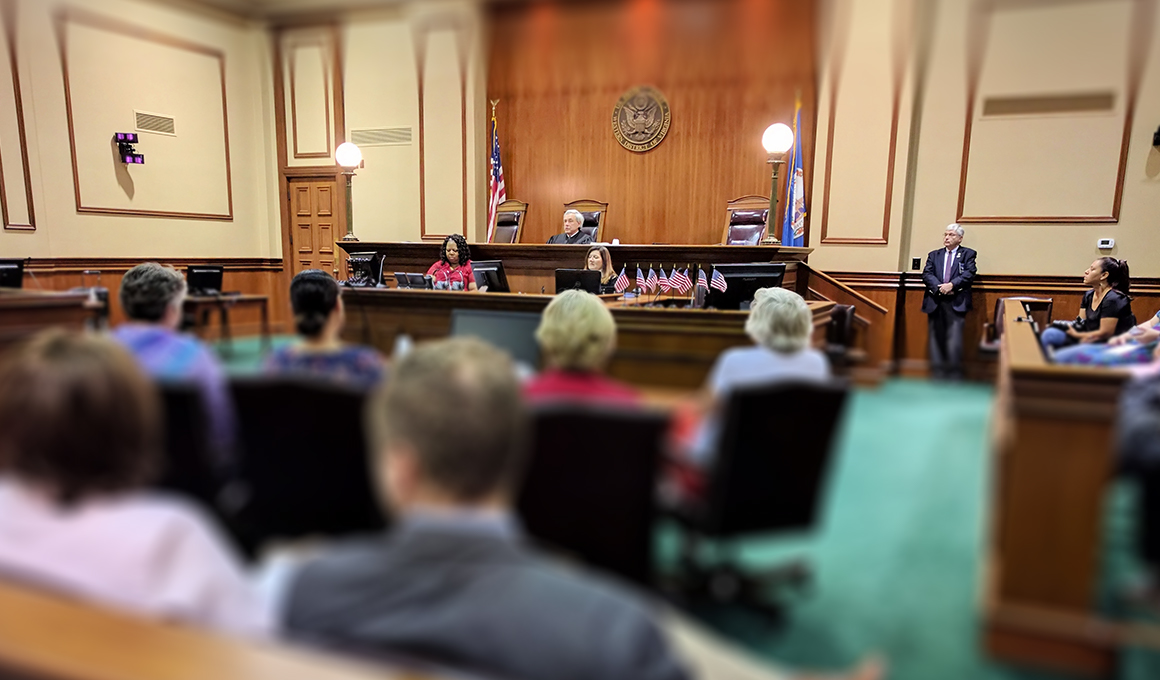Simplify legal arguments with interactive and structured trial presentations for better case presentation.
Simplify legal arguments with interactive and structured trial presentations for better case presentation.
Blog Article
How Test Presentations Enhance Your Disagreement and Encourage Jurors
Test presentations serve as a pivotal device for boosting lawful debates and encouraging jurors. By incorporating aesthetic help, narrative frameworks, and psychological engagement, lawyers can produce a compelling case that resonates on several levels. The calculated use visuals not only clarifies complicated information but additionally captures jurors' interest more successfully than words alone. However, the art of narration plays a just as important duty in changing factual proof right into a compelling narrative, shaping jurors' understandings - trial presentations. Comprehending these components can considerably impact trial results, elevating the inquiry of exactly how each element adds to this intricate dynamic.

Significance of Aesthetic Help
Aesthetic help play an important duty in enhancing the effectiveness of test discussions, as they can considerably boost audience interaction and retention of information. In the context of a trial, where jurors are tasked with handling facility info, visual aids serve to streamline and clear up essential points. Charts, charts, and pictures can convey information and concepts that may or else overwhelm or puzzle jurors, enabling a more simple understanding of the evidence provided.
In addition, visual aids assist in preserving juror interest throughout the proceedings. By damaging the dullness of verbal testament, these devices can punctuate crucial arguments, making them a lot more unforgettable. Reliable visual aids can additionally stimulate psychological responses, which can be crucial in convincing jurors to straighten with the presenter's story.

Crafting Engaging Narratives
An engaging narrative is necessary in test discussions, as it serves as the foundation of efficient persuasion. It permits lawyers to weave with each other truths, proof, and emotional components into a meaningful story that reverberates with jurors. This narrative structure enables jurors to recognize the complexities of the situation while assisting them with the attorney's debate.
To craft a compelling narrative, attorneys must concentrate on clarity and comprehensibility. Furthermore, the usage of vivid descriptions can develop mental images that aid jurors envision the events, making the narrative much more memorable.
Furthermore, integrating essential themes throughout the discussion strengthens the core message and aids in retention - trial presentations. The narrative must not just convey details yet additionally stimulate a feeling of justice, highlighting the stakes entailed. Inevitably, a well-constructed story cultivates a connection between the jurors and the situation, positioning the lawyer's debate as both reputable and engaging, therefore enhancing the chance of a beneficial verdict

Involving the Court Psychologically
Effective jury interaction depends upon the attorney's capability to get in touch with jurors on an emotional level. This link can dramatically influence jurors' assumptions and their utmost decision-making. Making use of psychological allures allows lawyers to humanize the case, transforming abstract legal concepts into click to investigate relatable experiences. By presenting real-life tales or endorsements, lawyers can evoke empathy and empathy, promoting a deeper understanding of the concerns at risk.
Visual help, such as pictures or videos, can better boost psychological engagement, giving jurors with vibrant depictions of the situation's human aspects. Crafting a story that highlights the struggles and accomplishments of the individuals involved ensures that jurors see past the legal arguments and recognize the human effects of their decisions.
Furthermore, tone and body language play a critical function in sharing feeling. An attorney's passionate delivery can reverberate with jurors, reinforcing their emotional investment in case. It's important to stabilize sob stories with valid proof, making certain that jurors feel obliged to act while staying grounded in the reality. Ultimately, a mentally involved court is most likely to be convinced, making psychological link a vital element of effective test discussions.
Structuring Your Discussion

The body of the discussion need to be realistically segmented into essential points, each sustained by engaging evidence. It is valuable to make use of storytelling methods to weave truths right into a story that jurors can quickly adhere to. Aesthetic help, such as graphes and videos, can improve understanding and engagement, assisting to highlight essential pieces of proof.
Real-World Instance Research Studies
Taking a look at real-world instance research studies gives important insights into the art of trial presentations and hop over to here persuasion. The defense team successfully employed a strategy that incorporated top-level expert testimonies with multimedia presentations, which captivated jurors and eventually influenced their choice.
Another noteworthy example is the "McDonald's Coffee Situation," where the plaintiff's attorneys utilized visuals photos of the injuries sustained by Stella Liebeck. trial presentations. This plain aesthetic proof played a critical role in conveying the seriousness of her burns, leading to a significant jury honor. Such situations demonstrate that impactful trial presentations often hinge on the efficient integration of visuals and storytelling to evoke psychological responses from jurors
Furthermore, the "Casey Anthony Trial" highlighted the significance of narrative coherence and credibility. The prosecution's failing to establish a compelling timeline diminished their persuasive power, emphasizing the requirement of a well-structured presentation. Examining these situations exposes that successful test presentations require strategic preparation, psychological involvement, and the capability to reverberate with jurors' values and ideas.
Final Thought
Test discussions considerably boost arguments and encourage jurors through the strategic usage of visual help, engaging stories, and emotional interaction. By streamlining complex information and promoting links with the audience, these components create an unforgettable and impactful experience. A well-structured presentation equilibriums psychological appeals with accurate evidence, ultimately resonating with jurors' values. The combination of these strategies not just influences decision-making but also emphasizes the value of efficient communication in the court. click for info
Report this page